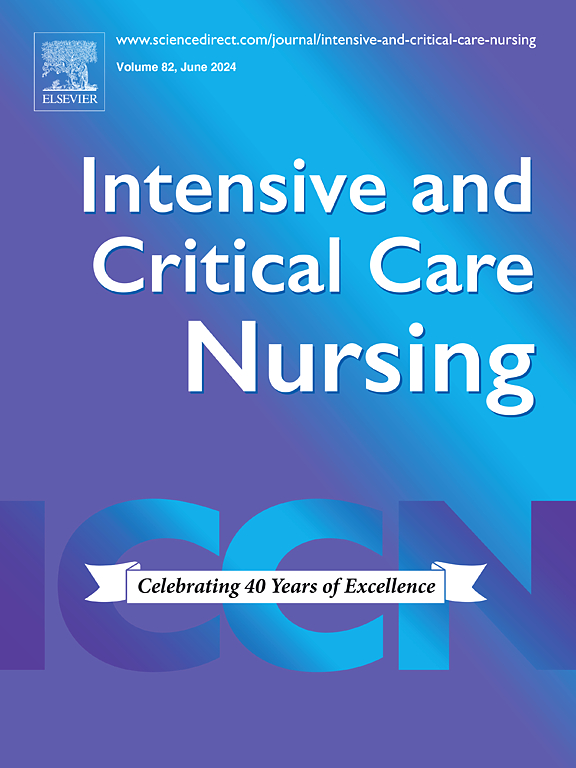急性肾损伤住院患者高钾血症与预后的关系
IF 4.7
2区 医学
Q1 NURSING
引用次数: 0
摘要
在一个可公开访问的数据集中,评估高钾血症与急性肾损伤(AKI)住院患者预后的关系,并探讨钾与预后之间潜在的非线性关系。方法纳入aki患者血清钾测定。高钾血症定义为血清钾水平高于5.5 mmol/L。主要终点是随机分组后14天内AKI进展、透析或死亡的综合结果。检查的其他结果包括主要结果的组成部分,AKI持续时间和一系列过程结果。在logistic回归中使用比值比(OR)和95%置信区间(CIs)研究高钾血症与检查结果之间的关系。使用限制三次样条回归和拐点分析来评估钾与预后之间的剂量-反应关系。结果共纳入5969例患者。其中1258例(21.1%)发展为主要结局。高钾血症与利益的结果独立相关。完全调整后,高钾血症与复合结局(OR 2.41, 95% CI 1.83—3.18)、AKI进展(OR 1.76, 95% CI 1.29—2.38)、死亡(OR 2.98, 95% CI 2.12—4.21)、透析(OR 2.02, 95% CI 1.24—3.29)、肾脏咨询(OR 2.06, 95% CI 1.53—2.78)和出院(OR 0.48, 95% CI 0.36—0.64)独立相关。观察到血清钾与每个结果的风险之间呈u型关系,在拐点分析中,风险最低点在4.1至4.2 mmol/L之间。研究结果在不同的亚组中总体上保持稳定。结论高钾血症与住院AKI患者的AKI进展、死亡、透析和许多过程结局显著相关。检查结果的风险最低点是在钾远低于5.0 mmol/L时。本文章由计算机程序翻译,如有差异,请以英文原文为准。
Association between hyperkalemia and outcomes in hospitalized patients with acute kidney injury
Introduction
To evaluate the association of hyperkalemia with outcomes of hospitalized patients with acute kidney injury (AKI) and explore the potential non-linear relationship between potassium and the outcomes in a publicly accessible dataset.
Methods
AKI patients with measured serum potassium were included. Hyperkalemia was defined as serum potassium level higher than 5.5 mmol/L. The primary outcome was a composite of AKI progression, dialysis, or death within 14 days of randomization. Other outcomes examined included components of the primary outcome, AKI duration, and a series of process outcomes. The association between hyperkalemia and examined outcomes was investigated using odds ratio (OR) and 95 % confidence intervals (CIs) in logistic regressions. Restricted cubic spline regression and inflection point analyses was used to assess the dose–response relationship between potassium and the outcomes.
Results
A total of 5969 patients were included. Of these, 1258 (21.1 %) developed the primary outcome. Hyperkalemia was independently associated with the outcomes of interests. After full adjustment, hyperkalemia was independently associated with the composite outcome (OR 2.41, 95 % CI 1.83–––3.18), AKI progression (OR 1.76, 95 % CI 1.29–––2.38), death (OR 2.98, 95 % CI 2.12–––4.21), dialysis (OR 2.02, 95 % CI 1.24–––3.29), kidney consultation (OR 2.06, 95 % CI 1.53–––2.78), and discharge to home (OR 0.48, 95 % CI 0.36–––0.64). A U-shaped association between serum potassium and the risk of each outcome of interest was observed, with the nadir of risk at the range of 4.1 to 4.2 mmol/L in the inflection points analysis. The findings generally remained stable in the different subgroups.
Conclusion
Hyperkalemia was significantly associated with AKI progression, death, dialysis, and a number of process outcomes in hospitalized patients with AKI. The nadir of risk for the examined outcomes was at potassium that is much lower than 5.0 mmol/L.
求助全文
通过发布文献求助,成功后即可免费获取论文全文。
去求助
来源期刊

Intensive and Critical Care Nursing
NURSING-
CiteScore
6.30
自引率
15.10%
发文量
144
审稿时长
57 days
期刊介绍:
The aims of Intensive and Critical Care Nursing are to promote excellence of care of critically ill patients by specialist nurses and their professional colleagues; to provide an international and interdisciplinary forum for the publication, dissemination and exchange of research findings, experience and ideas; to develop and enhance the knowledge, skills, attitudes and creative thinking essential to good critical care nursing practice. The journal publishes reviews, updates and feature articles in addition to original papers and significant preliminary communications. Articles may deal with any part of practice including relevant clinical, research, educational, psychological and technological aspects.
 求助内容:
求助内容: 应助结果提醒方式:
应助结果提醒方式:


